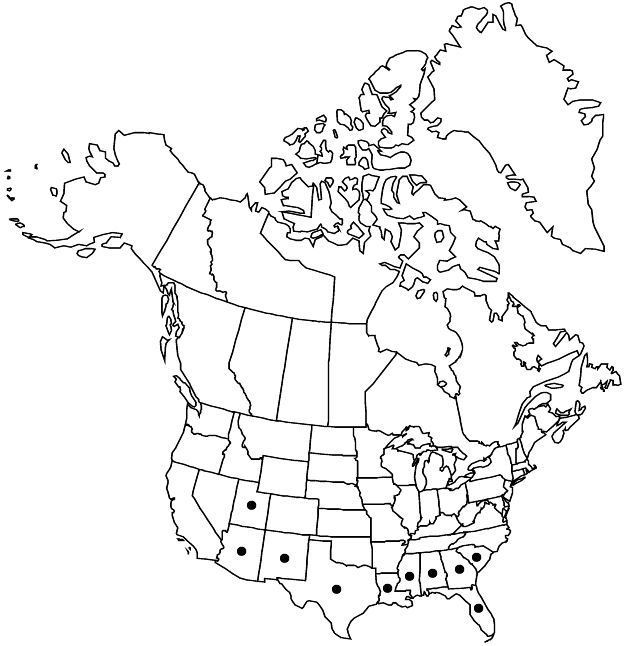Euphorbia hyssopifolia
Syst. Nat. ed. 10, 2: 1048. 1759.
Herbs, annual, with taproot. Stems erect to ascending, 80 cm, sparsely to densely pilose or pilose-crinkled proximally, usually glabrous distally. Leaves opposite; stipules usually connate, irregularly lacerate, 0.5–1 mm, usually glabrous, occasionally with few marginal hairs; petiole 1–2 mm, glabrous; blade lanceolate to oblong or falcate, 8–35 × 7–15 mm, base asymmetric, rounded, margins serrulate, apex broadly acute, abaxial surface glabrous or sparsely pilose toward base, adaxial surface glabrous; palmately veined at base, pinnate distally. Cyathia solitary or in small, cymose clusters occasionally with bractlike leaves at distal nodes or on congested, axillary branches; peduncle 0.5–2.5 mm. Involucre obconic, 0.9–1.1 × 0.7–0.9 mm, glabrous; glands 4(–5) (5th gland without appendage), yellow-green to maroon, elliptic to circular, 0.1–0.2 × 0.1–0.3 mm; appendages spreading, usually white or turning reddish with age, short reniform or semilunate, 0.1–0.3 × 0.2–0.6 mm, distal margin entire or slightly undulate to crenate. Staminate flowers 4–15. Pistillate flowers: ovary glabrous; styles 0.5–0.9 mm, 2-fid 1/2 length. Capsules depressed-ovoid, 1.5–1.6 × 1.7–1.8 mm, glabrous; columella 1.5–2 mm. Seeds brown to grayish white, ovoid, slightly 4-angled in cross section, abaxial faces convex, adaxial faces slightly concave to slightly convex, 1–1.4 × 0.7–1.1 mm, with 2–3 prominent transverse ridges that do not interrupt adaxial keel, or coarsely and inconspicuously pitted-reticulate. 2n = 12, 14.
Phenology: Flowering and fruiting late spring–early fall.
Habitat: Disturbed areas, ditches, gardens.
Elevation: 0–1500 m.
Distribution

Ala., Ariz., Fla., Ga., La., Miss., N.Mex., S.C., Tex., Utah, Mexico, West Indies, Central America, South America, introduced in tropical Asia, Africa, Australia.
Discussion
Euphorbia hyssopifolia is native to the New World tropics and is probably also native to parts of the southern United States. However, at least some of the records from the flora area appear to be from adventive plants.
Selected References
None.